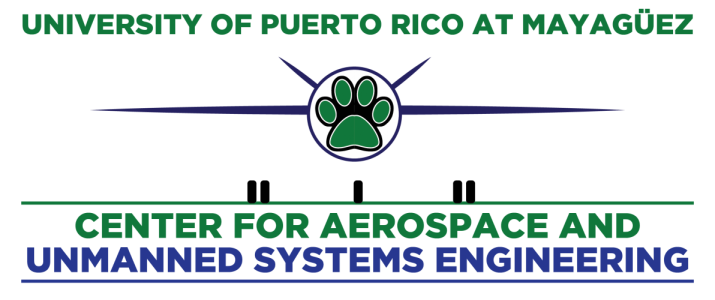Aerospace Design and Prototyping Facility
In 2014, the US Department of Education approved the UPRM’s proposal “Transformational Initiative for Graduate Education and Research (TIGER)” for $2 million dollars. TIGER will bring to UPR and Puerto Rico the first Aerospace Design and Prototyping Facility. The Aerospace Design and Prototyping Facility (ADPF) will be the first state-of-the-art facility related to aerospace systems in the Caribbean. This facility will have an educational emphasis on the fundamental and advance developments on space technology & science, aerospace systems, bio-inspired engineering, electro-mechanics, etc. Additionally to aerospace, the ADPF will have the mission to encourage the development of advance interdisciplinary projects focusing in novel research trends like materials, mechanics, electronics, energy, robotics, bio-engineering, etc. The ADPF will expand the hands-on-experience and training instruction of low-income Hispanic graduate students in Puerto Rico, by bringing unique machinery and experimental equipment to the next generation of Hispanic scientists and engineers.
Expected outcomes:
- Generation of original experimental data that will be used to increase the number of peer-reviewed publications/journals.
- Generation of Intellectual Property and patents related to the aerospace industry including novel prototypes (e.g. radars, unmanned aerial systems, robots, etc.).
- Establishment of unique training facilities in the Caribbean, to educate and motivate low-income Hispanic students to pursue a career related to aerospace engineering.
- Motivate to low-income Hispanic students to pursue advance graduate degrees in science and technology.
- Reinforce the leadership and competitiveness of UPRM.
Equipment:
- S Mini-Mill: A Three-phase Vertical Machining Center useful for the construction of printed-circuit-boards (PCBs). This machine will provide state-of-the-art manufacturing technologies just compared with high performance industries related to the aerospace industry.
- ST-10 CNC Lathe: A Computer Aided Design (CAD) Machine using Computer Numerical Control (CNC). This machinery is very important to convert the design produced by CAD software into new physical prototypes including cutting and shaping blocks of different materials.
- Replicator: A 3D printer for massive build volume and the high performance for large projects and models with a size up to 12”L x 12”W x 18” H. This is an essential machine for the development of rapid-prototypes related to structures, circuit boards, aerodynamics, etc.
- Digitizer: A desktop 3D scanner to create clean, watertight 3D models useful to replicate and develop variations of existing prototypes. This device will be useful to improve, shape, mold, twist, animate, and transform objects in a third-party 3D modeling program.
- ELEV-8 Quadcopter Kit with Additional Accessories (15 kits): It is the intention to use 15 flying robotic platforms to train graduate students on Unmanned Aerial Vehicles, Control Stabilization, Energy Management, etc. Five kits will be located at the Control Systems Laboratory, five kits will be located at the Power Electronics Laboratory, and five kits will be located at the Mechatronics laboratory
In conclusion, it is critical that state-of-the-art facilities should be available to train low-income Hispanic students in areas of national need related to science, technology, and engineering (e.g. aerospace, bio-systems, materials, etc.). The Aerospace Design and Prototyping Facility (ADPF) will be very beneficial to develop high-level research in Puerto Rico. Additionally, the ADPF will provide the benefit to expand existing facilities and bring new machinery and equipment useful to motivate and train students interested in pursue advance degrees.
